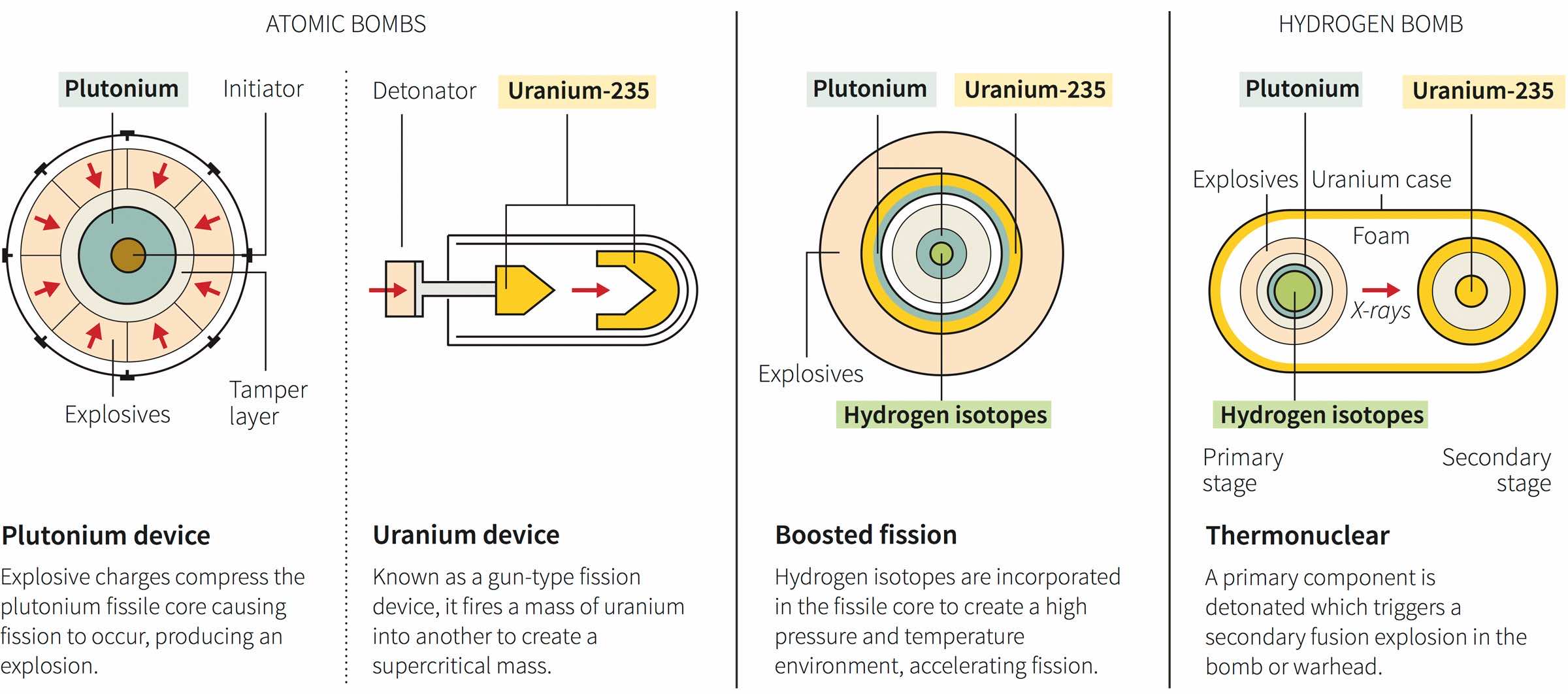

Modern thermonuclear weapons are not really two-stage fission-fusion bombs but more three-stage fission-fusion-fission. Here is more description where it is stated that half of the energy is from the U-238 fission like Tsar bomba Here is an illustration of a modern ICBM warhead where the casing is U-238 that will undergo fission but neutrons from the fusion reaction (nuclear_weapon)#/media/File:W-88_warhead_detail.png

It is possible to exploit even if there is no fusion but it is less effective (nuclear_weapon)Ī documented example of the effect of having the casing and pusher of fissionable material is Its yield dropped from 100Mt to 50 Mt when U-238 was replaced with lead You can use U-238 as the tamper around a fissile core in a fission bomb, Using a fissionable material will increase the yield. If it is to increase the yield when you have fusion in a bomb it is not useless. So if U-238 is useless or not depends on what you do. It is also fertile, and can be transmuted to fissile Pu-238, if hit with low-energy neutrons like in a nuclear reactor with the appropriate neutron moderation. You need fast neutrons like the one fusion stage produce. It is fissionable, and can be split apart if hit with a neutron. So you can use it as the first fission stage of a bomb or as the fuel of a nuclear reactorīut that does not mean U-238 cant undergo fusion. U-238 can't sustain a chain reaction that is what fissile means. I did by mistake write fusion instead of fission, my mistake.īut that lots of energy is released from U-238 fission is not a mistake, it is just not a well-known part of thermonuclear weapons or U-238. Around half the energy from a thermonuclear weapon is from Uranium-238 fusion so the yield of a cobalt bomb would be lower In normal thermonuclear weapons, the part that would cobalt is instead Uranium-238 that when hit by neutrons undergoes nuclear fission and releases energy. It is done to produce gamma-ray sources for many applications like medical radiotherapy. We know that this is happening because cobalt-59 is exposed to neutrons in reactors to produce cobalt-60. The half-life is short enough for it to emit lot of radiation but long enough so it continues for a couple of decades.Ĭobalt just happens to be an element where the stable cobalt-59 easily absorbed neutrons and produces cobalt-60. The idea is to put lost of cobalt-59 around a thermonuclear bomb, the second stage produces a lot of neutrons that escape and hit the cobalt-59 and transmit it to cobalt-60Ĭobalt-60 has half-life of 5.27 years and emit gamma rays. It is a hypothetical weapons that as far as publically known never have been built. We have bomb designs that make far bigger explosions and would kill more people in the initial explosion, but other than biological warfare the idea of cobalt bombs is perhaps the most frightening.Ī is what is called a salted bomb, which is a nuclear weapon designed to create a lot more radioactive fallout. It would be useless if your goal was conquest of the area or being at peace with the people you are fighting in the not so distant future. They would be rendered uninhabitable for a human lifetime. It would mean that the place bomb would not be able to be rebuilt like Hiroshima and Nagasaki were. It is a real nightmare when particles of it are lying around all over the landscape. It is a useful tool when you want to use it too sterilize food and kill pests or use it in radiation therapy to kill cancer cells. The radioactive isotope of cobalt created in the explosion has a half life measured in years, this makes it worse than other radioactive materials that either decay quickly enough to be no longer a threat after a short time or slowly enough that they don't give out too much radiation.Ĭobalt-60 hist the middle path of giving off enough radiation to be deadly but also doing it slowly enough to be a problem for several generations before it decays enough to be harmless. What they do is make a place too radioactive for longer than a human lifetime.īy adding regular cobalt in a nuclear bomb, so that it would be turned into radioactive cobalt and scatter across the landscape when the bomb explodes. They also don't create more intense radiation. This is not really true they don't do that. In popular media (especially from the 60s and 70s) Cobalt bombs are often depicted as creating much bigger explosions than regular nuclear bombs.


 0 kommentar(er)
0 kommentar(er)
